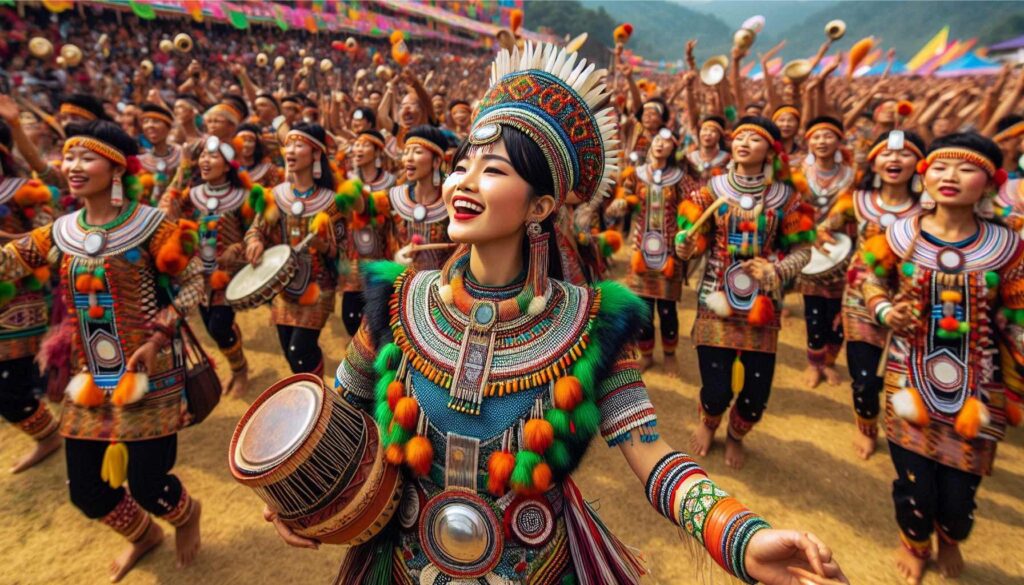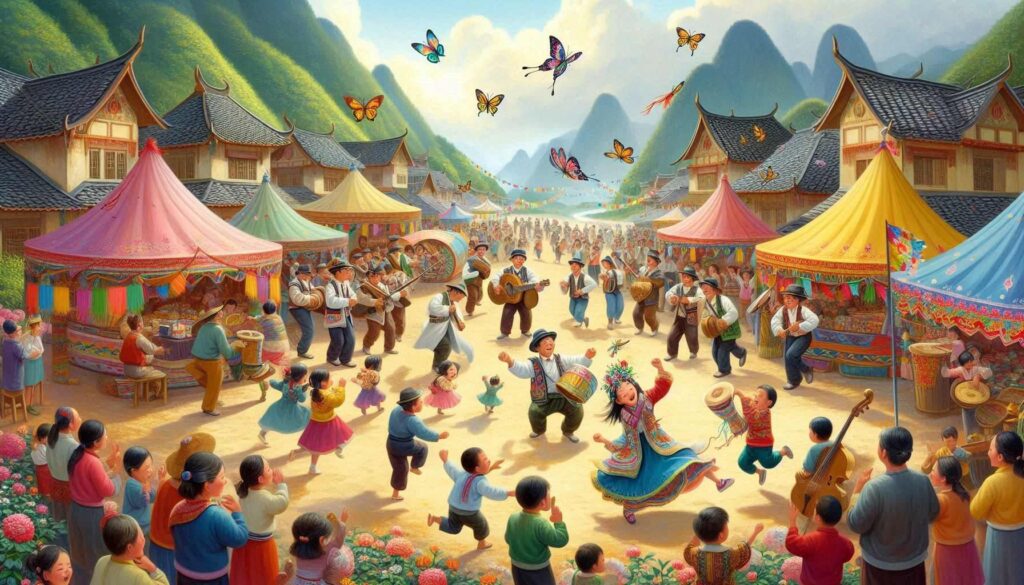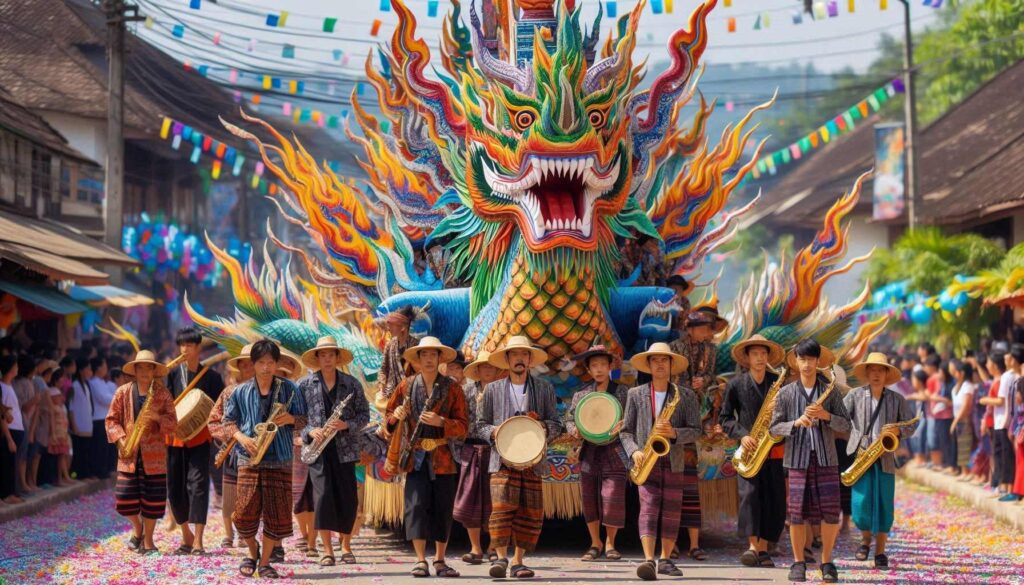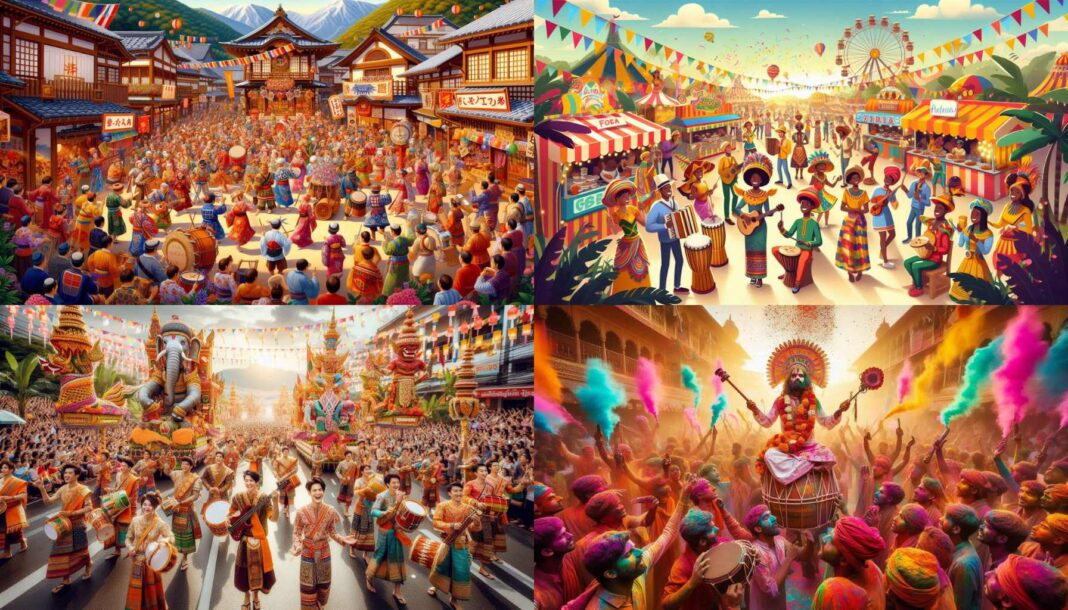Festivals in Nagaland in March 2025: Celebrating Culture, Spirituality, and Tradition
Nagaland, a vibrant state in northeastern India, is known for its diverse tribes, rich culture, and strong connection to traditions and spirituality. The people of Nagaland celebrate numerous festivals throughout the year, which are deeply tied to their agricultural cycles, spiritual beliefs, and social practices. March is a particularly significant month, as it hosts several festivals that bring together communities in vibrant celebrations of life, nature, and the divine.
Read More About Hindu Philosophy
This article explores the key festivals celebrated in Nagaland in March 2025, their cultural and spiritual significance, the rituals performed during these festivities, and the role these events play in shaping the social fabric of the Naga people. Whether you’re planning to visit Nagaland or seeking a deeper understanding of the state’s rich heritage, March offers an exciting glimpse into the state’s dynamic festivals and traditions.
1. Hornbill Festival (March 2025)

Though the Hornbill Festival is typically held in December, the ripple effects of this grand celebration often extend into the early months of the new year, particularly in March. The festival is a crucial part of Nagaland’s cultural identity and is considered the state’s most prominent celebration.
Rituals and Traditions
- Cultural Performances: One of the highlights of the Hornbill Festival is the traditional performances that showcase Naga tribal dances, music, and folk art. The festival typically hosts a series of cultural performances in various villages and public spaces in March, where each tribe gets an opportunity to showcase its unique dances, songs, and rituals.
- Traditional Feasts: Food plays a central role in the festival. Local specialties such as smoked pork, rice beer, and bamboo shoots are offered in abundance, and shared among the community members. Families and guests gather to enjoy the warmth and camaraderie of these grand feasts.
- Handicrafts and Art: The Hornbill Festival also acts as a platform to display the rich handicrafts of the Naga tribes, including woven textiles, jewelry, and bamboo crafts. Visitors can purchase these items as a way to support local artisans and take a piece of Nagaland’s heritage home with them.
Spiritual Significance
The Hornbill Festival symbolizes unity and the preservation of Naga cultural heritage. It brings together all the different Naga tribes to celebrate their shared identity, history, and beliefs. The festival holds spiritual significance as a time for thanksgiving for the harvests, prayers for prosperity, and honoring the spirits that protect the land.
**2. Monyu Festival (March 2025)

The Monyu Festival is a significant agricultural celebration for the Konyak tribe of Nagaland, typically observed in the months of March and April. This festival marks the beginning of the sowing season and is a way for the tribe to honor their ancestors and the natural world for a good harvest.
Rituals and Traditions
- Rite of Purification: The Monyu Festival begins with a purification ceremony, where the elders of the community perform rituals to cleanse the village of any negative energies from the previous year. This rite is believed to prepare the village spiritually for the new agricultural cycle.
- Sacrifices and Offerings: The Konyaks perform animal sacrifices, usually to the spirits of the mountains and forests, seeking their blessings for a bountiful harvest. The blood of the animals is believed to appease the gods and ensure fertility in the land.
- Traditional Dancing and Singing: One of the most exciting aspects of the Monyu Festival is the traditional dance and music performances. Members of the Konyak tribe dress in elaborate traditional costumes and perform dances that tell stories of their ancestors, their relationship with the gods, and their connection to nature.
Spiritual Significance
The Monyu Festival is deeply rooted in the Konyak tribe’s spiritual beliefs. It is a celebration of their connection to the earth and nature. The festival is a way to thank the spirits for the protection they have provided and to seek their continued blessings for future prosperity.
**3. Lao Festival (March 2025)

The Lao Festival, celebrated by the Lotha tribe in Nagaland, takes place in March and is a celebration of the harvest and the changing of seasons. The festival marks the end of the sowing season and the beginning of a new phase in the agricultural calendar.
Rituals and Traditions
- Rituals for Prosperity: The Lao Festival begins with offerings to the earth, where the Lotha tribe’s elders perform rituals to seek blessings from the spirits for the coming harvest. The tribe also makes offerings of food and drink to the deities, hoping for a fruitful season ahead.
- Feasts and Social Gatherings: Like most Naga festivals, the Lao Festival is marked by large community feasts. Traditional dishes such as pork, rice, and vegetables are served, along with rice beer, which is a staple of Naga celebrations. These feasts provide an opportunity for socializing and reaffirming the bonds between members of the community.
- Traditional Dances: One of the main highlights of the Lao Festival is the traditional dance performances, which are held at night. These dances are accompanied by drums and other traditional instruments and are performed to honor the spirits of nature.
Spiritual Significance
The Lao Festival holds spiritual significance as a time for community prayer, thanksgiving, and renewal. The Lotha tribe believes that the spirits must be appeased to ensure that the harvest is bountiful, and that the community remains blessed throughout the year.
**4. Rangpura Festival (March 2025)

The Rangpura Festival is primarily celebrated by the Chang tribe in Nagaland and occurs around March. This festival marks the end of the harvest and is a time for the community to celebrate their success and express gratitude for the bounty they have received from the earth.
Rituals and Traditions
- Offering to the Spirits: At the beginning of the Rangpura Festival, the Chang tribe makes offerings to the spirits of the land and ancestors. These offerings are often in the form of food, sacrifices, and prayers.
- Traditional Drumming and Dancing: Traditional dances and drumming are an essential part of the Rangpura Festival. The entire village gathers around a central bonfire, where the drummers perform energetic beats, and the dancers move to the rhythm in vibrant, colorful costumes.
- Feasts and Gatherings: The Rangpura Festival is a time for feasting and family reunions. Meals are shared among family members and friends, with pork, rice, and other local foods served in abundance.
Spiritual Significance
The Rangpura Festival is a way for the Chang tribe to honor their connection to the natural world. It is a celebration of their relationship with the earth and the harvest, symbolizing the tribe’s appreciation for the abundance of nature and their ancestors’ guidance.


